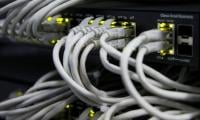Pakistan’s economy has, over the years, transitioned towards a services-oriented economy, with services making up 58 per cent of total GDP, largely due to underinvestment in both the manufacturing and agricultural sectors which have seen their share reduce in contribution to GDP.
Among services, a significant sub-segment is wholesale & retail trade, which makes up 19 per cent of GDP. As the population continued to grow and the country transitioned towards a trading-oriented economy often fueled by imported goods, rather than an economy actually producing tangible goods, the contribution of the wholesale & retail trade segment to GDP continued to increase, making it the largest sub-segment of the economy.
However, despite contributing 19 per cent to the GDP, its contribution to taxes is a measly 3.7 per cent of total taxes collected. Successive governments have failed to expand the tax net and bring into it wholesalers and retailers, who either through their collective bargaining power, or proximity to decision-making quarters have always been able to escape the taxation net. This results in inequitable taxation imposition, which is largely shared by an already burdened salaried workforce that has not only seen its tax bill increase but is also looking at significant erosion of real income.
Similarly, the corporate sector also continues to be taxed heavily, the effective tax rate being among the highest in the region, adversely affecting any reinvestment programmes or formal corporate growth. On one side we have a free hand to segments that contribute substantially to the GDP but barely pay any taxes, while on the other we have the formal segment and the salaried class which continues to pay taxes much to their dismay.
In such a scenario, the incentive to initiate and operate a formal business in the country does not exist, with most entrepreneurial activity happening in the informal segment to avoid taxation as can be seen by the substantial growth in currency in circulation over the last few years. Recently, after imposing a flat tax rate on traders during the budget, the government has withdrawn the same, clearly suggesting that it is certainly not serious about expanding the tax net but is fine with increasing taxes on already heavily taxed salaried employees, and corporate segment.
An argument that is being given for the removal of a fixed tax rate is that there are many small retailers, and any imposition of tax on them may not be equitable. Such an argument is understandable; however, that certainly does not mean that all traders remain exempt from taxes. It is estimated that there are more than 3.8 million commercial electricity connections in the country, which can be deemed as a good proxy for small & medium enterprises.
Assuming that small retailers or those who consume less than 100 kilowatt-hours (units) of electricity per month make up half of the total connections, we still have about 1.9 million eligible commercial entities that are potentially consuming an average of 200 units per month. It is estimated that roughly 56 per cent of all electricity consumed by commercial electricity connections has a load of 5kW or more. Imposing a tax of Rs2000 per month on such entities is sufficient to generate more than Rs45 billion in incremental tax revenue. The same, instead of being a fixed tax, can also be on a sliding scale depending on the consumption of electricity, such that it can act as a proxy for income.
Such imposition of an arbitrary tax pegged with electricity consumption can only be a piecemeal solution. Traders and other such commercial entities can be given an option that the same tax can be adjusted when they file for taxes annually, such that a culture of tax filing can be instituted within this segment. Similarly, it can also be used as a tool to encourage onboarding with an integrated point-of-sale (POS) system as being rolled out by FBR among Tier-1 stores, and eventual transition towards cashless payments, infrastructure for which is already in place in the form of Raast. It is entirely possible for any commercial entity to send and receive payments through Raast, enable the recording of transactions, and reduce the overall incidence of currency in circulation in the economy, which has its own positive monetary benefits.
Once there is a transition towards integrated POS and cashless payments, it will be possible for the tax authorities to identify with some degree of certainty how much tax can be collected from a particular market, retailer, etc. The availability of additional data points can further refine the ability to triangulate a fair assessment of tax that can be collected, making the process more transparent.
Before any of this can be done, it is imperative that the tax net be broadened through the crude imposition of a fixed tax, initially for bigger entities, followed by smaller entities with a smaller monetary value. The ultimate objective, in this case, remains the expansion of the tax net, and documentation of the economy. Successive governments have failed to do this.
Kicking the can down the road may not be an option anymore if we want to reduce fiscal deficits and create a more equitable economy. If the objective remains to repeat the same mistakes of the last three decades, then sadly we are on the right track in this particular case.
The writer is an independent macroeconomist.
Data, today, defines how we make decisions with tools allowing us to analyse experience more precisely
But if history has shown us anything, it is that rivals can eventually unite when stakes are high enough
Imagine a classroom where students are encouraged to question, and think deeply
Pakistan’s wheat farmers face unusually large pitfalls highlighting root cause of downward slide in agriculture
In agriculture, Pakistan moved up from 48th rank in year 2000 to an impressive ranking of 15th by year 2023
Born in Allahabad in 1943, Saeeda Gazdar migrated to Pakistan after Partition







